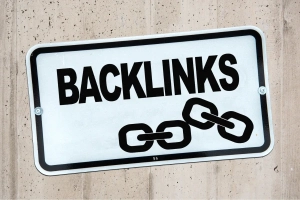What is a Backlink? How to Build High-Quality Links with MIMADIGI
What is a Backlink?
Backlinks, also known as inbound links, are links placed on another website that point back to your website. They are one of the key factors that help Google evaluate the credibility and ranking of a website in search results.
If a website has many high-quality backlinks, Google will understand that it is a trustworthy website with useful content and will prioritize ranking it higher.
Why are backlinks important in SEO?
Backlinks are considered votes of confidence from other websites. The quality and quantity of backlinks will directly affect:
- Website credibility and authority: Backlinks from reputable sites help increase trust and authority.
- Increase referral traffic: Users can click on backlinks on other websites to reach your page.
- Support Google in understanding content: Links help Google discover and collect website data faster.
- Impact on search rankings: Websites with many high-quality backlinks usually have a higher position on Google.
Criteria for a high-quality backlink
Not all backlinks are good. To make backlinks effective in SEO, keep the following in mind:
- Reputable backlink source: Links from websites with high credibility and relevant content.
- Natural links: Backlinks are placed naturally, not spam or link buying.
- Diverse anchor text: Use main keywords, secondary keywords, and natural anchor text, avoiding excessive repetition.
- Link position: Backlinks are located in the main content of the article, not the footer or sidebar.
- Content relevance: The website placing the backlink has a topic close to or related to your field.
How to Build High-Quality Backlinks Effectively
Create Valuable and Engaging Content
- Content is the foundation for quality backlinks. When you create helpful, unique articles that solve problems for readers, other websites will naturally link to you as a trusted reference source.
Write guest posts on reputable websites
- Write articles on blogs, newspapers, or forums related to your field and insert backlinks in the article. This is an effective way to build quality backlinks while increasing brand awareness.
Participate in industry communities and forums
- Share knowledge, answer questions, and place backlinks in your signature or helpful content on industry forums and Facebook groups.
Collaborate with influencers and bloggers
- Connect with influential people in the field to have them introduce or share your content, creating backlinks from sources with large traffic.
Leverage social media
- Share articles on social media channels such as Facebook, LinkedIn, and Twitter to increase the chance of being linked naturally from other users.
Check and restore broken backlinks
- Use tools like Google Search Console or Ahrefs to check for broken or lost backlinks, then contact the website administrator to restore or replace them.
Mistakes to Avoid When Building Backlinks
Buying and selling backlinks in large, uncontrolled quantities.
Creating backlinks on low-quality, spam websites.
Using unnatural anchor text, keyword stuffing.
Placing backlinks in inappropriate locations such as the footer or spam comments.
Ignoring regular backlink monitoring and checking.
Tools to Support Backlink Building and Quality Checking
Ahrefs: Analyze competitor backlinks, track your website's backlinks.
Moz Link Explorer: Check domain authority and backlink quality.
Google Search Console: Track backlinks to your website.
SEMrush: Analyze backlinks and competitor strategies.
BuzzSumo: Find popular content to build backlinks.































Share your review